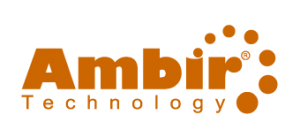Scanning the field: Finding the imaging device for you
 You need to scan documents. Or photos or business cards or receipts. That’s easy. Lots of devices that can do that.
You need to scan documents. Or photos or business cards or receipts. That’s easy. Lots of devices that can do that.
But which scanner is right for you?
The good news is, it won’t be hard to figure out. There are a few key questions to ask:
-What will you be scanning?
-How much of it will you be scanning?
-Where will you be doing all this scanning?
If you can answer these, you’re well on your way to finding your scanner soul mate.
Sheet-fed scanners
Maybe you’re a personal organization guru. You know where everything is. Every receipt for every candy bar or cup of coffee you’ve ever bought is neatly filed away in its corresponding folder. But you’re tired of all that paper. It’s time it all got scanned and incorporated into Evernote or Google Docs.
Compact, powerful and affordable, sheet-fed scanners are perfect for weekend organization warriors. They take up about as much space as a three-hole punch and run on USB power, so they won’t occupy an electrical outlet, which can be at a premium around a home computer desk.
Many sheet-fed scanners, like the Ambir TravelScan Pro, offer one-button scanning straight to PDF, which universalizes your newly digitized documents and allows you to easily upload to the cloud. Sheet-fed scanners are quick, cost-effective and represent a perfect option for at-home users.
Automatic document feeder (ADF) scanners
Maybe you’ve got a whole room full of documents that need scanning. Or you own a small business that has some pretty demanding imaging needs.
ADF scanners are the workhorses on the scanner farm. They’re powerful, resilient and can get a ton done in one day. If you or your business has entire fields of paper to plow through, an ADF scanner is probably the right choice. By allowing you to load it up and walk away, an ADF scanner automates almost the whole process.
There are many affordable ADF options, including the Ambir ImageScan Pro 930u. And many aren’t much bigger than a sheet-fed scanner, so you can have powerful scanning and still not give up that precious desk space.
Card scanners
Perhaps you’re a traveling fiend. You’re on the road, doing business most of your waking hours, and you want to stay organized, connected and on top of things. You need to scan the new business cards you’re always collecting and the receipts you need for filing travel expense reimbursement. Or maybe your medical practice is looking for a super-compact way to scan insurance cards at the point of admissions.
A card scanner fulfills all of these needs and more. The Ambir PS667-AS, for instance, stows nicely in a laptop bag and takes up about as much room as a stapler on a desk. In three seconds, you get crisp images of personal ID, insurance and business cards, without requiring the user to leave the desk to make a physical record at a copier. Many can even handle the embossed characters on credit cards.
Flatbed scanners
If you need to scan irregularly-shaped objects, this is probably the one for you. There’s no machine to “feed” through, so the scanned object can be much thicker than paper. You can just set the object on the pane of glass, cover with the lid, and scan. (Plus, they can play music!)
Unfortunately, flatbed scanners have a larger footprint than the other types we’ve discussed. But for some, the specific need to scan 3D objects outweighs the lost desk space.
Simplex or duplex?
Simplex means one side at a time is scanned. Duplex means both sides are. It’s a simple question, really. Do you want to capture both sides of a document at the same time? Think about the documents you’re typically dealing with. If most of them are double-sided, a duplex scanner is probably the way to go. Single-sided, go with a simplex device.




Leave a Reply
Want to join the discussion?Feel free to contribute!